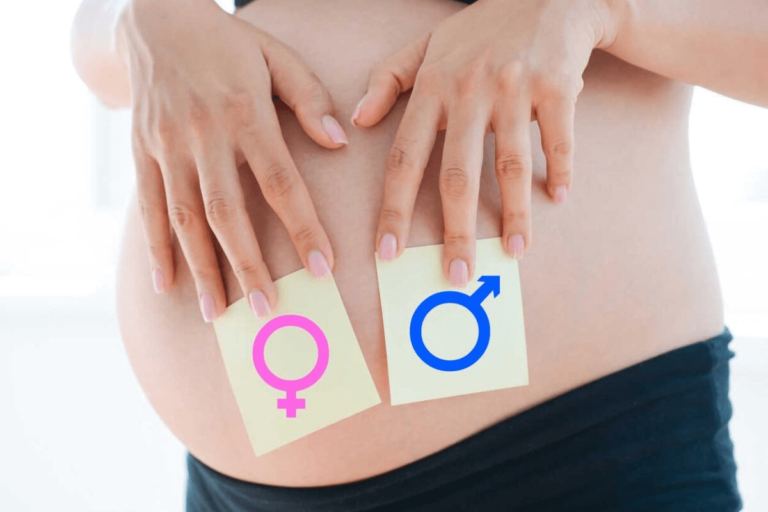Miscarriage in the First Trimester vs. Second Trimester: What’s Different?

Introduction
Miscarriage is a deeply emotional experience that can happen at any stage of pregnancy. While most miscarriages occur in the first trimester, some happen later, during the second trimester. Understanding the differences between these two types of losses can help parents cope with the physical and emotional challenges. In this article, we’ll explore the causes, symptoms, and recovery processes for first and second-trimester miscarriages, highlighting the unique aspects of each.
What Is a Miscarriage?
A miscarriage is the spontaneous loss of a pregnancy before the 20th week of gestation. It’s a common experience, with about 10-20% of known pregnancies ending in miscarriage.
Emotional and Physical Impact
- Physical Effects: Pain, bleeding, and hormonal changes.
- Emotional Effects: Grief, anxiety, and fear about future pregnancies.
First Trimester Miscarriage: An Overview
Common Causes
- Chromosomal Abnormalities: Account for more than 50% of first-trimester miscarriages.
- Hormonal Issues: Low levels of progesterone or thyroid dysfunction.
- Implantation Problems: Issues with the embryo attaching to the uterine wall.
Signs and Symptoms
- Vaginal bleeding or spotting.
- Cramping similar to menstrual pain.
- Sudden loss of pregnancy symptoms like nausea or breast tenderness.
For tips on managing early pregnancy symptoms, read this First-Trimester Survival Guide.
Second Trimester Miscarriage: An Overview
Causes of Second Trimester Miscarriages
- Uterine Abnormalities: Conditions like fibroids or a septate uterus.
- Cervical Insufficiency: When the cervix opens too early.
- Infections: Such as UTIs or listeriosis.
- Placental Issues: Placental abruption or insufficiency.
Warning Signs
- Moderate to heavy vaginal bleeding.
- Severe abdominal or back pain.
- Decreased fetal movement (if previously detected).
Key Differences Between First and Second Trimester Miscarriages
| Aspect | First Trimester | Second Trimester |
|---|---|---|
| Timing | Before 13 weeks | Between 13 and 20 weeks |
| Common Causes | Chromosomal abnormalities, hormonal issues | Uterine abnormalities, infections |
| Symptoms | Bleeding, cramping, loss of pregnancy symptoms | Severe pain, heavy bleeding, decreased fetal movement |
| Diagnosis | Blood tests, ultrasounds, tissue analysis | Advanced ultrasounds, amniocentesis |
| Emotional Impact | Shock, guilt, fear | Intense grief, increased fear for future pregnancies |
Symptoms to Watch For in Each Trimester
First Trimester
- Spotting or light bleeding.
- Sharp abdominal pain or cramping.
- Sudden drop in symptoms like morning sickness.
Second Trimester
- Heavy bleeding or clots.
- Back pain that worsens.
- Unusual vaginal discharge or fever (possible infection).
If you experience any of these symptoms, seek immediate medical attention.
Diagnosis and Medical Interventions
Tests for Early Loss
- Ultrasound: Confirms the presence or absence of a fetal heartbeat.
- Blood Tests: Check hormone levels like hCG and progesterone.
- Tissue Analysis: Examines the genetic material of the pregnancy.
Tests for Later Loss
- Advanced Ultrasounds: Identify uterine or placental issues.
- Amniocentesis: Detects chromosomal or genetic conditions.
Emotional Impact: Early vs. Late Loss
First Trimester Loss
- Often accompanied by shock and guilt.
- Parents may feel isolated if they haven’t shared their pregnancy news.
Second Trimester Loss
- The grief may be more intense as parents have often seen ultrasounds or felt the baby move.
- Higher risk of developing anxiety or PTSD.
Recovery After Miscarriage
Physical Recovery
- First Trimester: Recovery takes about 2-4 weeks.
- Second Trimester: May require a longer recovery due to additional medical procedures like D&C or labor induction.
Emotional Recovery
- Seek counseling or join support groups.
- Share your feelings with trusted friends or family members.
Preventive Measures for Future Pregnancies
- Prenatal Care: Schedule early and regular checkups.
- Healthy Lifestyle: Eat a balanced diet, exercise moderately, and avoid harmful substances.
- Address Underlying Conditions: Treat hormonal imbalances or uterine abnormalities.
For insights on managing pregnancy symptoms, consider this guide on food aversions and appetite changes.
FAQs About Trimester-Specific Miscarriage
1. Is miscarriage more common in the first or second trimester?
Most miscarriages (about 80%) occur in the first trimester.
2. Can second-trimester miscarriages be prevented?
Yes, with proper prenatal care, treatment for infections, and monitoring for cervical or uterine issues.
3. How soon can I try again after a miscarriage?
Most doctors recommend waiting 1-3 months, depending on your physical and emotional recovery.
4. Are symptoms of miscarriage the same in both trimesters?
No, symptoms vary depending on the trimester, with second-trimester losses often involving more severe pain and bleeding.
Conclusion
Miscarriage in the first and second trimesters presents unique challenges, both physically and emotionally. Understanding the differences in causes, symptoms, and recovery can help parents navigate their loss and prepare for future pregnancies. With the right medical care, emotional support, and lifestyle adjustments, hope and healing are possible.






